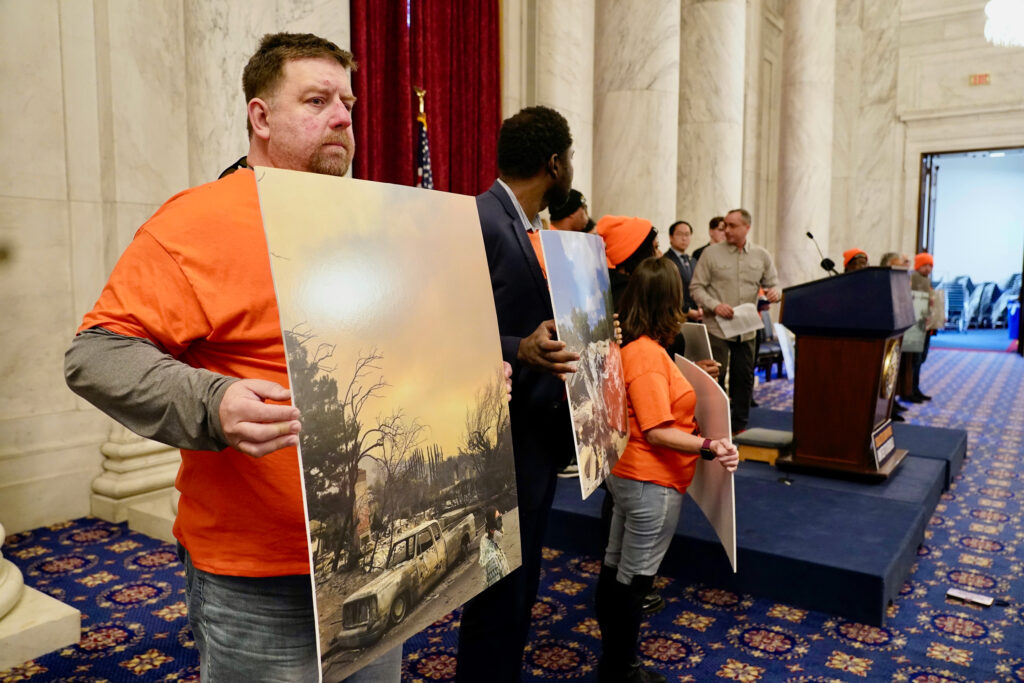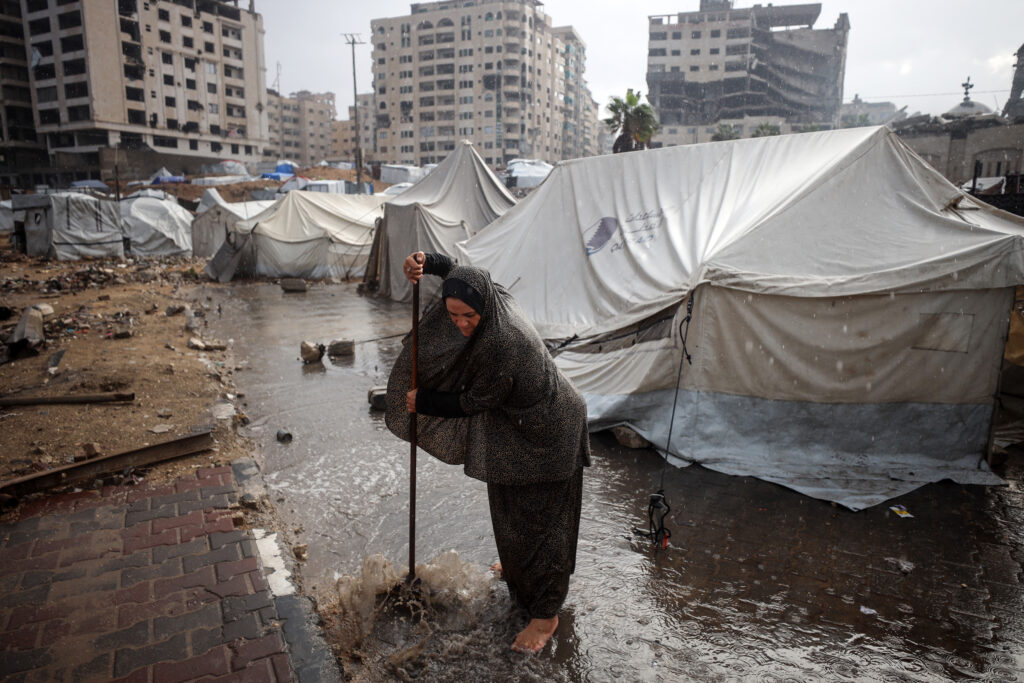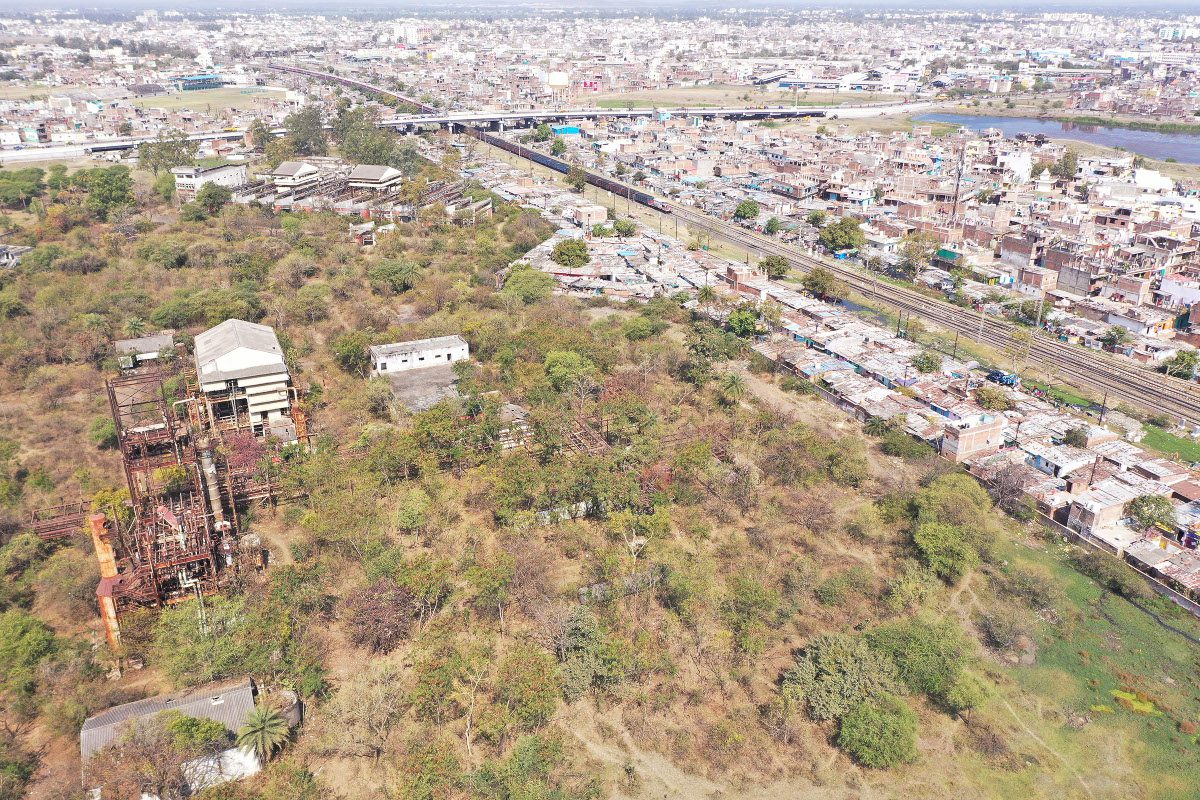In the last year, nearly a third of American households with children were unable to pay their energy bill for at least one month.
Ratepayers have had enough. Last month, local affiliates of the People’s Action Institute and 350 Action staged more than 25 rallies across the country to draw attention to the links between climate change and rising energy bills, and to demand action from utility companies and local regulators to stop rate hikes and aid the clean energy transition.
“The main message for this rally and for us moving forward is that people want clean energy and they want affordable energy, and that those things go hand in hand, and we’re tired of paying for polluting power,” said Rebecca Beaulieu, communications director of 350 New Hampshire, who helped organize a rally and march to the offices of Eversource, the investor-owned utility company that services more than 70 percent of the state.
Explore the latest news about what’s at stake for the climate during this election season.
In multiple states, organizers like Beaulieu put together protests at their local utility companies or public utility commission offices opposing rate hikes, held teach-ins for community members to learn how climate change is increasing their bills and led other actions to raise public awareness for energy justice.
The coordinated week of action follows years of campaigning in some states, where local community groups have been tracking rising energy burdens and fighting for rate caps. Activists said one of their main goals is to raise public literacy on the roles that climate change and regulators play in rising bills. In some cases, they’re also pushing for public power utilities, an alternative to investor-owned utilities that has gained popularity in recent years and would put more ability to determine rates and energy sources in ratepayers’ hands.


The week of action included rallies and marches in nearly 20 states, including California, Colorado, Georgia, Montana, New Hampshire and New York. The partnership between 350 Action, the political arm of international climate organization 350.org, and the People’s Action Institute, a national group that focuses on building grassroots political power for the working class, is significant, said Matt Kasper, research director at the Energy and Policy Institute.
“I think we’ll just continue to see it more and more, this merging of environmental justice organizations, consumer advocates and entities like People’s Action,” Kasper said. “Because I think the reality of what’s happening right now is just this one-two punch of an energy burden crisis and a climate crisis.”
Climate Change Exacerbates Energy Injustice
Energy burdens have become increasingly taxing for Americans in recent years. The National Energy Assistance Directors Association found that in the last year, more than a third of households have had to forego basic necessities like medicine or food to keep up with energy bills.
As climate change brings hotter summers and more frequent extreme weather events, the nation’s already aging electricity grid has become increasingly stressed, causing more frequent outages, additional costs for companies and greater financial and weather related burdens on ratepayers.
According to NEADA, half of Americans live in states with no summer-shut off protections. As heat waves occur with more frequency, that can leave low-income families in dangerous conditions—in the last year, more than 1 in 5 households had to keep their home at an unsafe or unhealthy temperature for at least one month to save money on their energy bills. These burdens are especially acute for low-income households and families of color, particularly Black, Hispanic and Native American households, which bear the brunt of both shut-offs and unaffordability.
“People say ‘Oh, just turn off the lights when you leave the room, save money that way,’ but for a lot of households, it comes down to [choosing] between feeding your children or keeping your apartment at a livable temperature during a heat wave so that your grandmother doesn’t die,” said Emily Park, co-executive director of 350 Wisconsin. “That’s not a real choice.”


350 Wisconsin got involved in this campaign more than two years ago, Park said, when they found stark inequities in how big a share of their total income Black and Latinx households in Wisconsin were paying for energy, compared to white households. They began participating in public processes with the state’s utility regulator, the Public Service Commission, and found that there was a barrier of entry for community engagement.
“I feel like you have to have a degree in public policy or energy analysis to be able to read any of these dockets,” Park said. “Figuring what they mean and how they impact an everyday person is very challenging, and finding out when the public comment periods and opportunities for engagement (are), that’s even harder.”
The group has been hosting teach-ins, trying to spread awareness about how energy infrastructure impacts health and the environment, and how community members can get involved in the regulatory process through things like public comments. Park said she’s also looking ahead to the November election, as the makeup of the state legislature will impact what the group is able to campaign for.
Rates Hikes and Monopolies
Beaulieu and other campaigners in New Hampshire are protesting an August rate hike from Eversource. Beaulieu said it will burden many community members, and added that aid provided by the state has thus far been insufficient.
William Hinkle, a spokesperson for Eversource, said that the rate hike stems from changes on the wholesale supply market and changes to the cost of distribution. He noted that major storms induced by climate change over the last several years have required increased restoration efforts, and part of rising distribution costs include upgrades needed to make the system more resilient to extreme weather.
“Eversource does not earn a profit on the cost of electricity,” Hinkle wrote over email. “With respect to energy supply prices, utilities like Eversource do not have any control over the price paid for energy supply purchased for customers on the wholesale market.”
This story is funded by readers like you.
Our nonprofit newsroom provides award-winning climate coverage free of charge and advertising. We rely on donations from readers like you to keep going. Please donate now to support our work.
Donate Now
Hinkle said that the company encourages its customers to choose the best energy generation option available to them and Eversource will deliver electricity from that source.
“Any customer can purchase power from an alternative supplier,” Hinkle said. “It’s all dependent on the customer’s priorities and what they want to choose.”
He was speaking about how Eversource serves several of the dozen or so states that allow households to choose a company to generate their electricity, while the utility handles the delivery of power to their homes.
Beaulieu said that it’s not always clear what alternative energy supplies are available or where they would come from, and that consumers’ choices are limited by the fact that most cannot pick the utility that delivers their energy.
“We [have] done a lot of knocking on doors across the state to talk to people about their electricity companies, and are finding that [New Hampshire] residents don’t really have a choice,” Beaulieu said. “It’s Eversource or nothing in most cases.”
Advocates and researchers say that many investor-owned utilities are monopolies that lack competition to keep prices down. Energy rates are instead regulated by state commissions and the Federal Energy Regulatory Commission, which have legal obligations to ensure just and non-discriminatory rates. But investor-owned utility companies and trade associations often lobby or otherwise influence regulators to protect their profits, at the expense of consumers, according to the Energy and Policy Institute.
“If I don’t like my utility company, I can’t just shop around and pick a new one, I’m stuck with who I have,” Park said. “So we think that these utilities should not be able to use the money made off their captive audience on lobbying, which will then hurt their own customers.”
The Energy and Policy Institute has tracked proposed legislation in 11 states aiming to prohibit investor-owned utility companies from using money paid by energy consumers to support political activities like lobbying.
In recent years, several bribery scandals have shown the lengths to which utility company executives have gone to keep profits high. In 2021, FirstEnergy, an Ohio-based utility company servicing seven states, was fined $230 million for bribing public officials, and in 2023, executives from Commonwealth Edison, the utility monopoly in Illinois, were found guilty of bribing the former house speaker for favorable legislation.
“If I don’t like my utility company, I can’t just shop around and pick a new one, I’m stuck with who I have.”
This year, Floodlight, a news outlet investigating corporations and political interests stalling climate action, analyzed 30 years of corporate prosecutions and federal lawsuits and found that fraud and corruption at U.S. utilities is on the rise and has cost ratepayers billions of dollars.
Some advocates are calling for more community-owned electricity providers, or public power, instead of investor-owned utilities. Public power utilities would be owned by community members and controlled by local government, giving ratepayers a more direct say in decisions about electricity sourcing or rate changes. Researchers and advocates are also calling for reinterpretation of the legal standard for a “just and reasonable” rate.
Alexandra Klass, an energy law professor at the University of Michigan, said more states are introducing legislation requiring public utility commissions to consider issues of equity and justice in determining rates.
“There’s much greater recognition that there are other principles that need to be considered in just and reasonable rates, looking at historic and current inequities and underserved communities,” Klass said.
Klass and Gabe Chan, a public policy professor at the University of Minnesota, have written about energy justice, arguing that the power grid is a social project and that cross-subsidization is a natural byproduct of distributing a shared resource.
“It’s a big social project to recreate the grid, the energy system, for what we need in the future,” Chan said.
Dan Gearino contributed to this story.
About This Story
Perhaps you noticed: This story, like all the news we publish, is free to read. That’s because Inside Climate News is a 501c3 nonprofit organization. We do not charge a subscription fee, lock our news behind a paywall, or clutter our website with ads. We make our news on climate and the environment freely available to you and anyone who wants it.
That’s not all. We also share our news for free with scores of other media organizations around the country. Many of them can’t afford to do environmental journalism of their own. We’ve built bureaus from coast to coast to report local stories, collaborate with local newsrooms and co-publish articles so that this vital work is shared as widely as possible.
Two of us launched ICN in 2007. Six years later we earned a Pulitzer Prize for National Reporting, and now we run the oldest and largest dedicated climate newsroom in the nation. We tell the story in all its complexity. We hold polluters accountable. We expose environmental injustice. We debunk misinformation. We scrutinize solutions and inspire action.
Donations from readers like you fund every aspect of what we do. If you don’t already, will you support our ongoing work, our reporting on the biggest crisis facing our planet, and help us reach even more readers in more places?
Please take a moment to make a tax-deductible donation. Every one of them makes a difference.
Thank you,


















